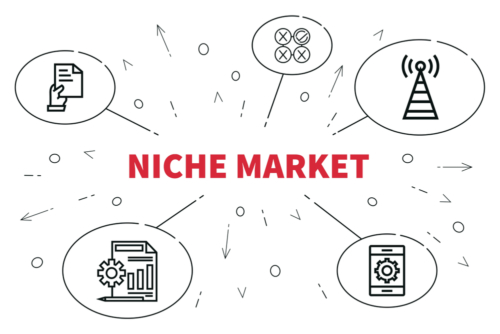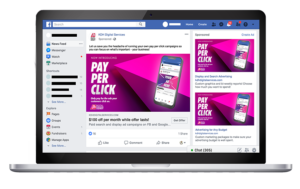Pay Per Click
PPC Advertisement is one of the fastest growing forms of online marketing today. For most, it is a favorite way of reaching larger targeted audiences by marketers and businesses alike. But what is it that makes Pay Per Click such an attractive form of marketing? Let’s take it a bit further and explore the pros and cons of pay per click marketing.PPC Pro: Setting Your Own Budget
A great feature offered by all Pay Per Click management systems is being able to set your budget. This means you can limit the amount of money you spend per click, day, month, and other time frames. Being able to set your own budget comes in handy whenever you’re starting to test what works and what doesn’t. For example, you can set your PPC Campaign to spend a limit of 6 dollars a day on clicks. Once your campaign reaches the set limit, no more money will be spent on ads until the next day. PPC Campaigns allow you to set a limit on how much you’re willing to spend per click. The price per click can range anywhere from a few cents to tens of dollars.PPC Con: Plenty of Competition
 One downside to Pay Per Click is the number of competitors that may be trying to earn a spotlight for like key terms. Although the competition may not be extremely large, it’s always a smart move to stay up to date with the latest PPC marketing trends.
One downside to Pay Per Click is the number of competitors that may be trying to earn a spotlight for like key terms. Although the competition may not be extremely large, it’s always a smart move to stay up to date with the latest PPC marketing trends.
PPC Pro: Statistics are Measurable and can Get Results in an Instant
In comparison to Search Engine Optimization (SEO), PPC Campaign statistics are highly measurable and allow users to view results in an instant. Google Adwords and Bing Adwords allow you to check how well your ads are doing in real time. This allows you to adjust your campaigns much faster, possibly saving you time and money. Failing to track results is an easy way for your PPC Campaign to fail.PPC Con: It’s a Paid Service
It’s true, running a Pay Per Click Ad Campaign costs more money than an SEO campaign. That’s why our experts at KDH Digital Services are Google Adwords certified. They can help keep PPC Campaign costs down and avoid unnecessary spending.PPC Pro: Targeted Niches
 Pay Per Click ad campaigns allow you to target specific niches, which can raise your ROI.
For example, if you’re a local Killeen tire shop owner looking to boost sales, PPC Campaigns allow you to target locals who are looking for tires. This helps prevent you from paying for clicks from someone who wasn’t interested in the first place, saving you money.
Pay Per Click ad campaigns allow you to target specific niches, which can raise your ROI.
For example, if you’re a local Killeen tire shop owner looking to boost sales, PPC Campaigns allow you to target locals who are looking for tires. This helps prevent you from paying for clicks from someone who wasn’t interested in the first place, saving you money.
PPC Con: No Guarantees for Your Money
Just like any other marketing strategy, PPC doesn’t guarantee that you’ll earn a profit or even your money back from an ad campaign. Many businesses are misguided to believe that if they spend large amounts of money, they’ll get a larger return. The reality is that ROI depends on multiple variables such as product quality, keywords, services, demand, etc. Although PPC is not a complete gamble, make sure you’re willing to lose money before investing in it.PPC Pro: Global or Local Exposure
 Another advantage PPC provides is exposure. Whether your ad targets local or global audiences, it can definitely boost the amount of audience your ad reaches in a short amount of time. Pay Per Click also allows campaign managers to choose what parts of the globe an ad will appear in. This feature makes PPC a great option for local and international entities who are looking to get the most out of internet marketing.
Another advantage PPC provides is exposure. Whether your ad targets local or global audiences, it can definitely boost the amount of audience your ad reaches in a short amount of time. Pay Per Click also allows campaign managers to choose what parts of the globe an ad will appear in. This feature makes PPC a great option for local and international entities who are looking to get the most out of internet marketing.
PPC Con: Time Consuming Research and Execution
Although they may seem easy to do, Pay Per Click ad campaigns take up plenty of time to be executed correctly. There are plenty of variables to take into consideration in order to manage a successful campaign. That’s why most people who run Pay Per Click Campaigns hire a marketing agency to manage everything for them. Of course, you can always try managing your marketing campaign yourself, just make sure you have the time to learn how to maximize PPC in comparison to other competing entities.Final Thoughts
The Pros and Cons of Pay Per Click are a good thing to know before jumping into this marketing strategy. Every online marketer and business owner should have reliable information about PPC. We at KDH Digital Services can’t wait to hear your thoughts!
0

 Don’t forget to give your followers a reason to visit your website! Doing so enables you to share specific information about your company that Facebook, Twitter, and Instagram can’t do for you. Here are some quick tips that’ll help you reach your social media goals:
Don’t forget to give your followers a reason to visit your website! Doing so enables you to share specific information about your company that Facebook, Twitter, and Instagram can’t do for you. Here are some quick tips that’ll help you reach your social media goals:
 Effective customer service is destined to lead to an increase in revenue, customer satisfaction, and retention. This is because it’s easier for people to ask questions on social media than to go through a long process of contacting a business and being put on hold. Quick and effective responses are a great way of separating your business from the rest of the competition.
Effective customer service is destined to lead to an increase in revenue, customer satisfaction, and retention. This is because it’s easier for people to ask questions on social media than to go through a long process of contacting a business and being put on hold. Quick and effective responses are a great way of separating your business from the rest of the competition.
 We can never stress this one enough.
We can never stress this one enough.  Here’s a picture of a KDH Digital Services ad campaign on Facebook:
Here’s a picture of a KDH Digital Services ad campaign on Facebook:
 Once your online advertisement is clicked on, search engines and social media platforms recollect a small fee in return. What usually happens is that search engines and SMPs find the best bidders and showcase them at the top of the ad search results. But be careful, you wouldn’t want to spend more than what you make per click. If done correctly, search engines reward advertisers with relevant and intelligently
Once your online advertisement is clicked on, search engines and social media platforms recollect a small fee in return. What usually happens is that search engines and SMPs find the best bidders and showcase them at the top of the ad search results. But be careful, you wouldn’t want to spend more than what you make per click. If done correctly, search engines reward advertisers with relevant and intelligently